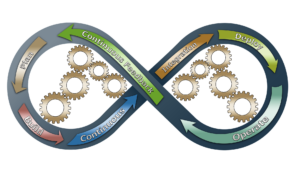How To Use Call Center Analytics
 As businesses grow and expand, call centers become a crucial component of many organizations. Call centers handle customer inquiries, complaints, and support requests. However, simply hiring for a call center is not enough. Data tracking and analysis from call center interactions proves vital for company leaders making data-driven decisions and improving customer satisfaction. Those decisions represent key goals for any company wanting to grow.
As businesses grow and expand, call centers become a crucial component of many organizations. Call centers handle customer inquiries, complaints, and support requests. However, simply hiring for a call center is not enough. Data tracking and analysis from call center interactions proves vital for company leaders making data-driven decisions and improving customer satisfaction. Those decisions represent key goals for any company wanting to grow.
“Call center analytics” refers to the process of collecting, analyzing, and using data from call center interactions to make informed decisions. It involves the use of various technologies and tools to measure the effectiveness of a call center, identify areas for improvement, and optimize operations. Because we provide service for call centers, we took the time to research and discuss what call center analytics are, the benefits of using this data, and how to use it effectively.
What Are Call Center Analytics?
Call center analytics involve analyzing various types or categories of data collected from call center interactions. These categories include call volume, call duration, wait times, call abandonment rates, customer satisfaction scores, and more. By analyzing this data, call center managers can gain insights into how their teams are performing and identify areas where they can improve. Call center analytics tools can also provide real-time information, allowing managers to make immediate decisions to improve customer satisfaction.
Benefits Of Using Call Center Analytics
Benefits of using call center analytics include:
- Improved customer satisfaction: By analyzing call center data, managers can identify common customer issues and address them quickly. This can lead to higher customer satisfaction scores and happier customers.
- Increased efficiency: Call center analytics can help managers identify areas of inefficiency in call handling processes. By optimizing these processes, call center agents can handle more calls and provide better service to customers.
- Better employee performance: By analyzing call data, managers can identify areas where call center agents may need additional training or coaching. This can help agents improve their performance and provide better service to customers.
- Cost savings: Call center analytics can help managers identify areas where costs can be reduced. For example, by optimizing call handling processes, call center agents can handle more calls, reducing the need for additional agents.
How To Use Call Center Analytics
Developing KPIs
To use call center analytics effectively, managers must first identify the key performance indicators (KPIs) that they want to measure. These KPIs will vary depending on the organization and the goals of the call center. Some common KPIs include:
- Average handle time: The average time it takes for a call center agent to handle a call.
- First call resolution: The percentage of calls that are resolved on the first call.
- Customer satisfaction: The percentage of customers who are satisfied with their call center experience.
- Call abandonment rate: The percentage of calls that are abandoned by customers before they are answered.
Choosing Call Analytics Tools To Fit KPIs
Once the KPIs have been identified, managers use call center analytics tools to track and analyze data. Many call center analytics tools come out all the time, ranging from simple spreadsheets to complex software programs. Some of the key features to look for in call center analytics tools include:
- Real-time data: The ability to view call center data in real-time can help managers make immediate decisions that can improve customer satisfaction.
- Customizable dashboards: Dashboards should be customizable to display the KPIs that are most important to the organization.
- Historical data: Call center analytics tools should provide access to historical data, allowing managers to track trends over time.
- Integration with other systems: Call center analytics tools should integrate with other systems, such as customer relationship management (CRM) software, to provide a complete view of customer interactions.
Conclusion
Call center analytics is an essential tool for any organization with a call center. By analyzing data from call center interactions, managers can identify areas for improvement, optimize processes, improve employee performance, and ultimately increase customer satisfaction. When using call center analytics, it is important to identify the key performance indicators that are most relevant to the organization and to use a tool that provides real-time data, customizable dashboards, historical data, and integration with other systems. By making data-driven decisions based on call center analytics, organizations can improve the overall customer experience and achieve greater success.
Ready For A Top Notch VoIP Business System?
Need help getting your data? We can take care of it all for you.
Here at NoContractVoIP, we create custom business phone systems offering a full suite of hybrid and remote solutions for your telecom needs. We rely on your success and we know it.
We never lock our clients into long term contracts. If you dislike our services or support, just tell us to cancel and we take care of it. No early termination fees, nobody gets stuck for years on end, and we’re motivated to keep our clients thriving.
All of our tech support people live and work near our headquarters in California, and tech support always answers 24/7/365. Our billing and customer support work from the same office. When you call you get a human, not a menu.
To get the latest helpful content delivered to your inbox every month, subscribe to our newsletter here.
Looking for the finest stress-free custom business telephone systems? Contact us or call today at 866-550-0005!
